We are making our way across Sri Lanka towards Namal ~ the baby elephant whom we met last year and vowed to help get a new leg.
We have a few days before our “date” with our pachiderm. We have time for one more adventure before the main “mission” of our trip, hopefully becomes a reality.
Ben is done with meetings and once again it is a tuk tuk driver who is the catalyst to our explorations and experience at Tissa Lake.
Jana picks us up at dusk in his tuk tuk decorated with paintings of Bob Marley all over, and we are off. He says he has a very specific spot with special trees he wants to show us. Lake Tissa and its surroundings are the ‘backyard’ he has grown up with, and knows like the back of his hand. On the way to “the tree” we stop at the side of the road to watch small white herons and other birds walking through the shallow waters at the edge of the lake, in search of their insect meal.
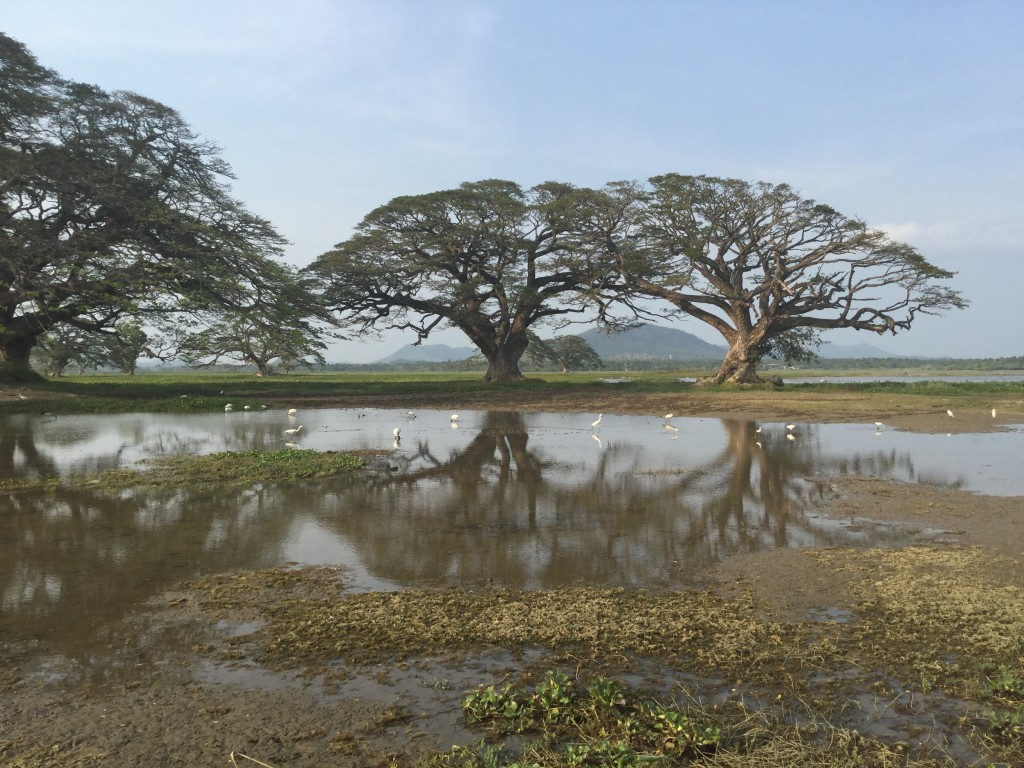
The large trees are reflected in the shallow waters, which play host to numerous types of birds. What a blissful sight!
When we get to the huge trees, they are full with what appears at first to be hanging nests? Jana tells us that no, these are not nests, but are fruit bats!
Here in Tissa Lake, we are in “fruit bat” territory. These bats are much larger than the small bats that used to keep our home free of mosquitoes and who used to be “hunting practice” for our several cats. Their large wing span and sharp angle maneuvering in the sky above lead Ben to comment on the “crowded airspace” above…
It really is quite magical to watch these amazing and very graceful mammals flying through the air and communicating with each other. Our tuk tuk friend’s “special tree” is indeed quite a spectacle. Home to literally thousands of fruit bats, it is (by day) a living sculpture of branches and large winged bats hanging in pod-like forms.
Their black “exterior” reveals, once they take flight, a beautiful yellow/orange under belly.
We stand mesmerized while watching, as day slowly turns to a golden pink dusk and the ink-black pods of inverted bats, start to stretch their limbs creating a living mobile. The population gradually “awakens” and they start to take flight, first one by one, and as the sky darkens, in larger seemingly coordinated packs.
Pretty soon, the sounds and wing flaps turn to a near frenzy as the entire community soars toward nearby fields of fruit trees.
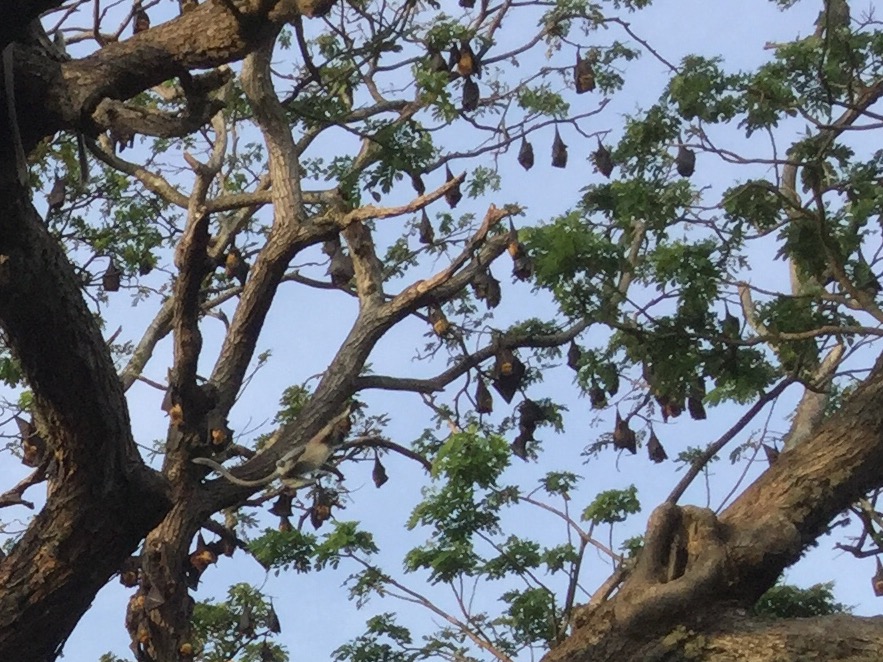
“Truth be told, bats have an unsavory reputation” although much of which is believed about them is in fact in correct, according to Pamela Sacks in “Finding the Beauty in Bats.”
“For instance, bats are not blind; they just don’t see well at night. And they don’t get tangled in peoples hair. Their biological sonar, known as echolocation, keeps them from fling into humans. They emit calls and listen to the echoes that return from objects in the environments. Thats how they navigate and hunt.”
From personal experience, I (Peta) used to have a fear of bats, which is not an uncommon human response to these mammals. However, after living in Nicaragua and having quite a few encounters with bats in our home, I got to understand them better. Their faces are initially scary and they do look a bit like rodents, although they are not. Bats are extremely intelligent and quite beautiful once one gets over the stereoptypic response many of us humans have in reaction to their ‘ugliness.’
There is certainly nothing to fear.
There is only one variety of bat, the so called “vampire bat” which feeds on warmed-blooded animals, such as cows, horses and goats. Having a name like vampire bat, certainly does not help its image or reputation.
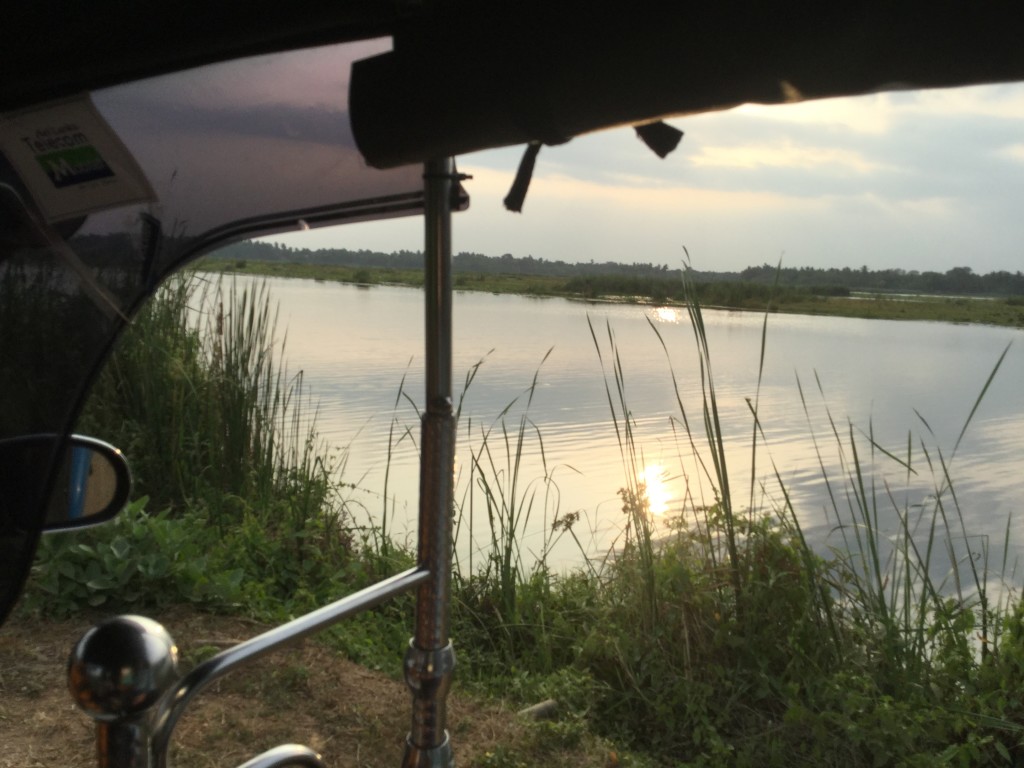
The tuk tuk makes for a perfect way to visit the various lakes and watch the birds and other wildlife.
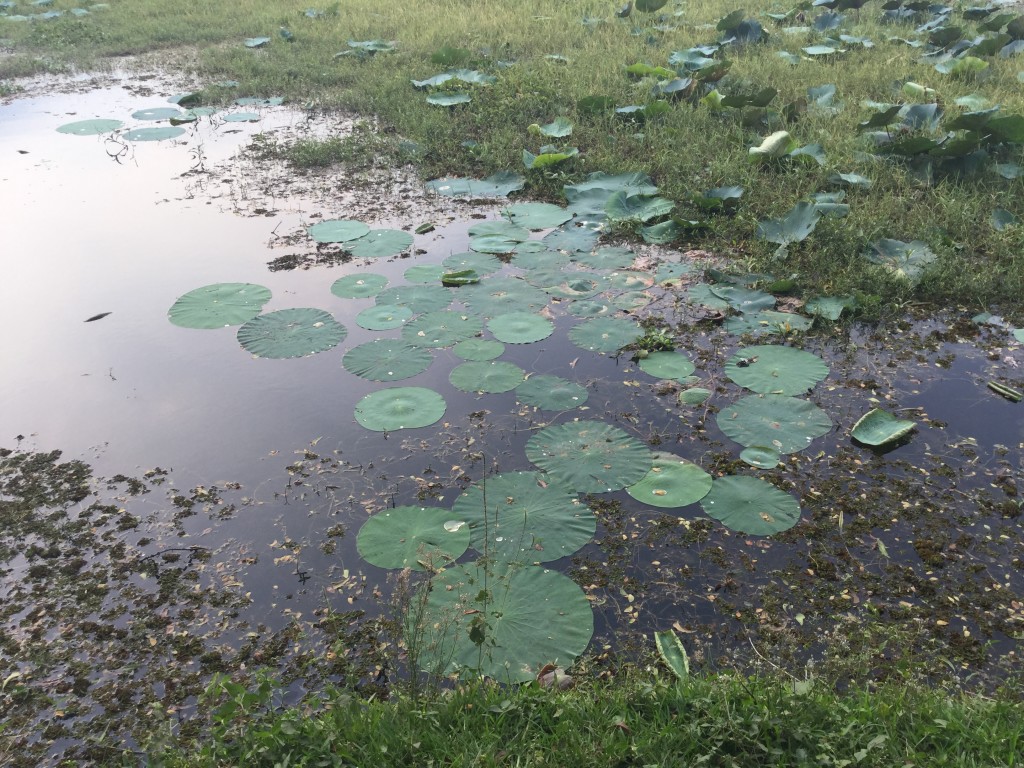
Our tuk tuk driver tells us stories about the fauna around these places. One local resident to look out for: the swamp alligators…
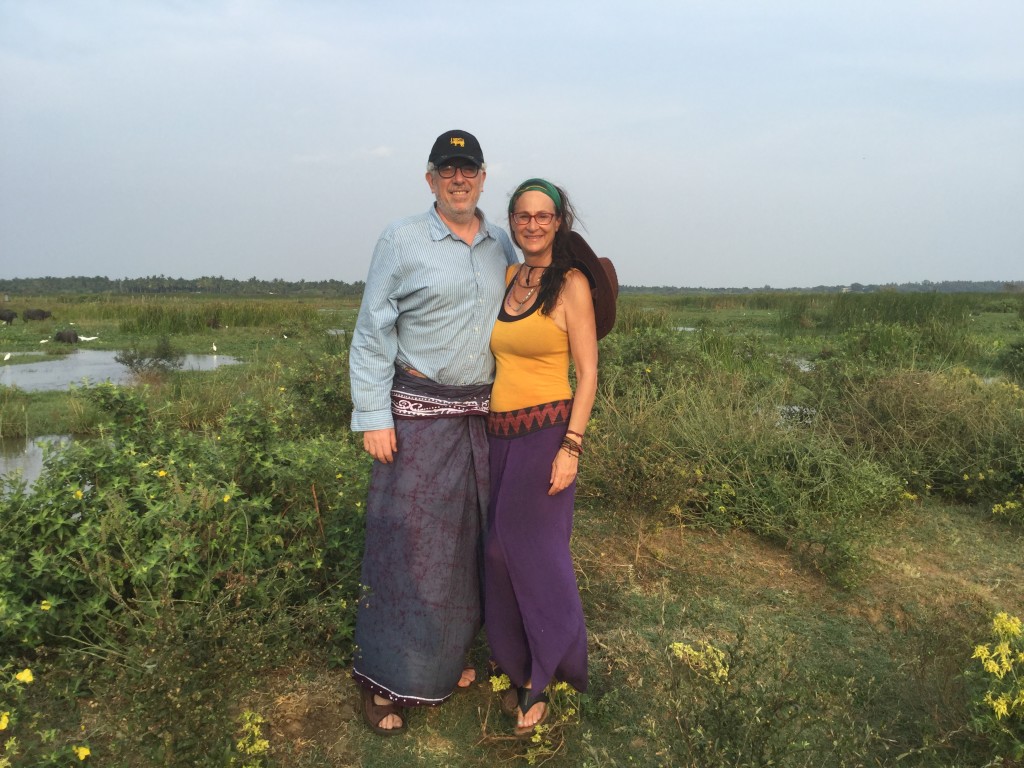
We stop here to watch the water buffaloes (in the distance.) Sri Lanka and Viet Nam have afforded us many opportunities to observe and enjoy this dramatic animal. Ben’s sarong looks pretty good with my Thai pants!
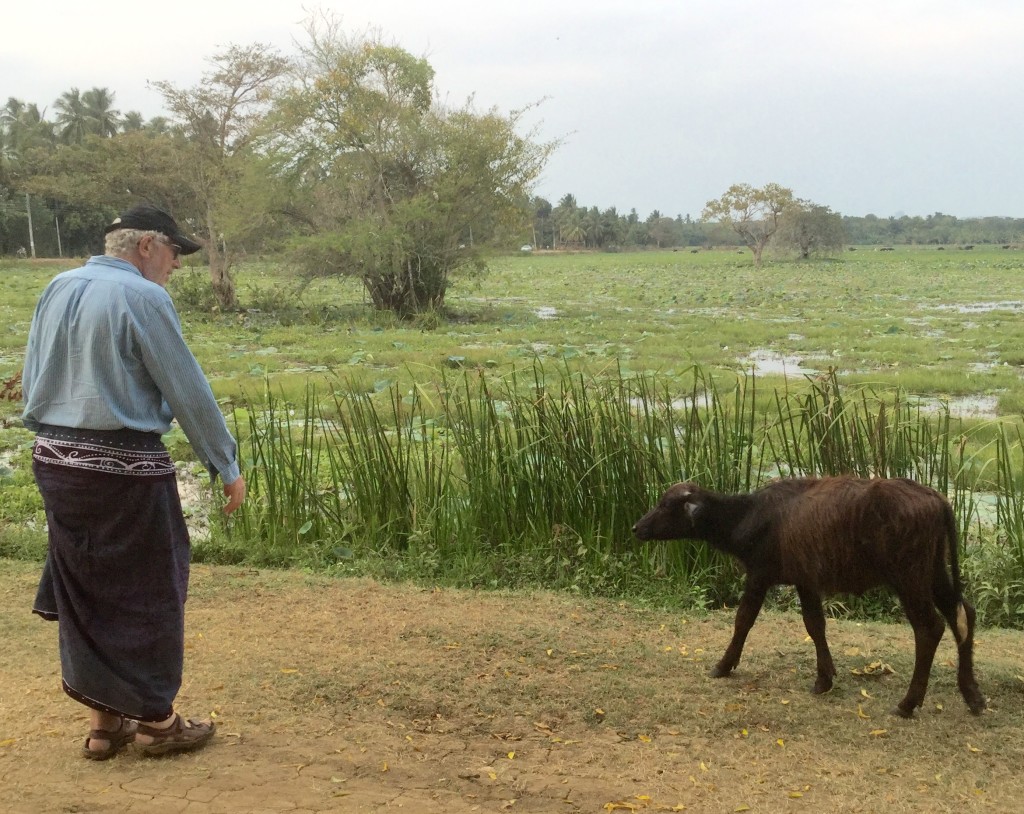
BABY water buffaloes on the side of the road. Ben literally jumps out of the tuk tuk to go and say hi and get a closer look!
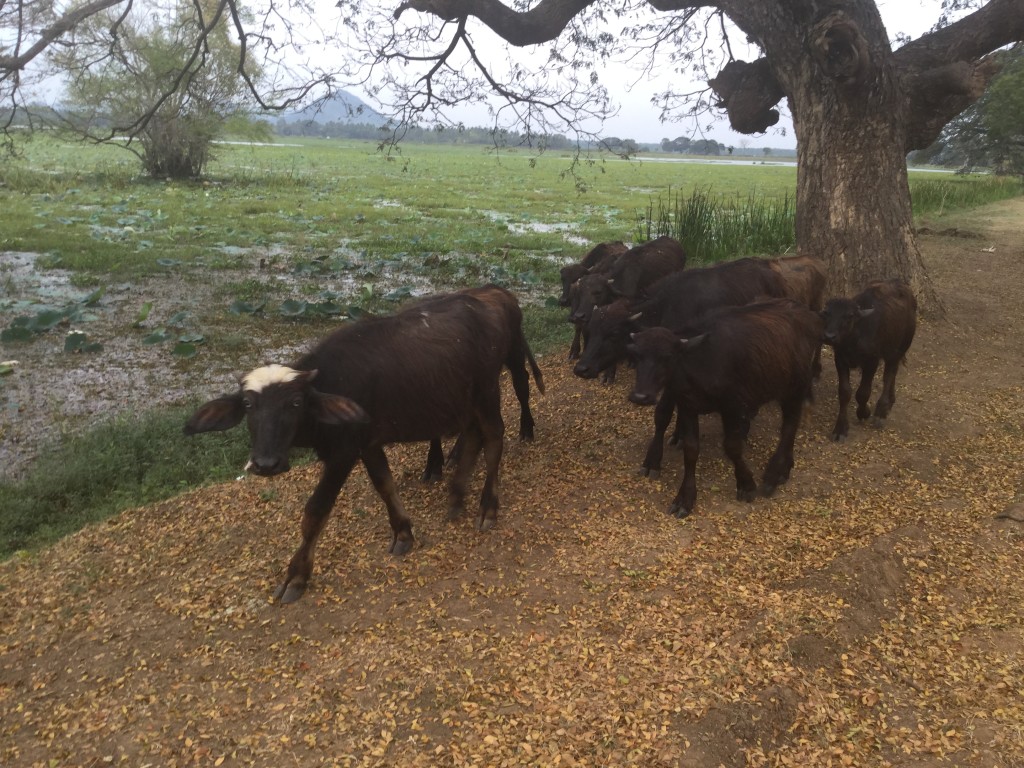
Nothing is more fun than sitting in an open air tuk tuk and being inches away from a herd of baby water buffaloes walking by. The one in the front has a particularly cute mop of white fur atop his head.
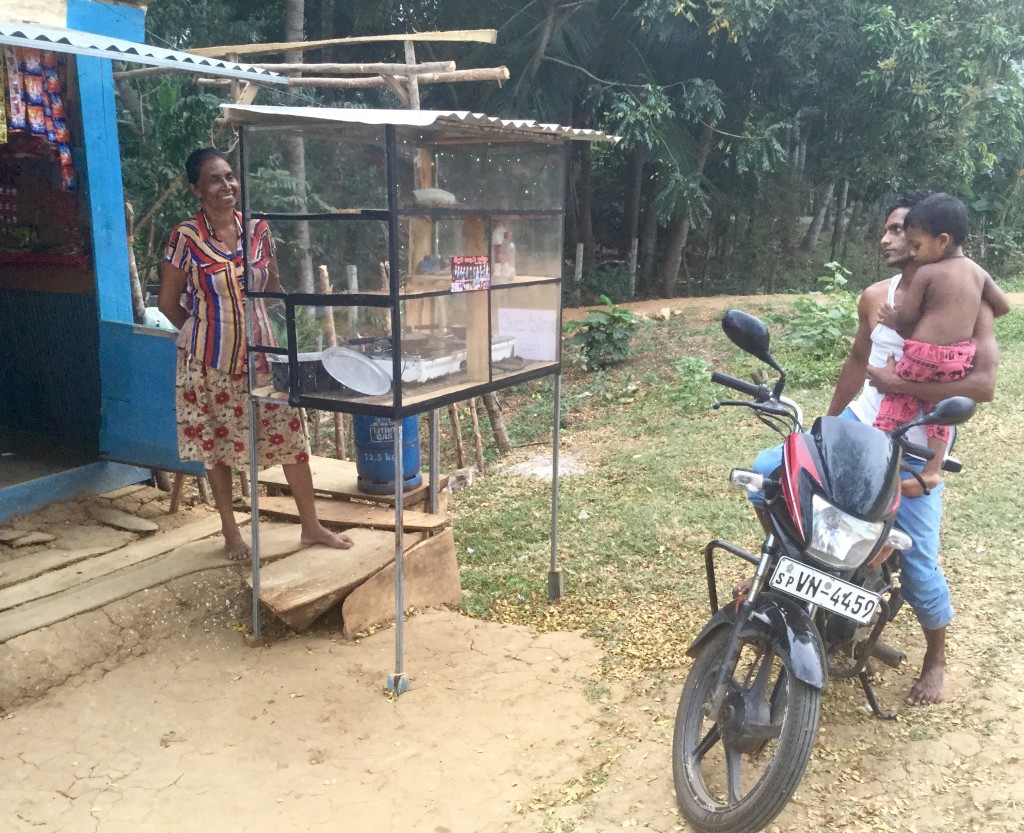
And on the other side of the road…. a father and his young son stop to say hi to a friend .
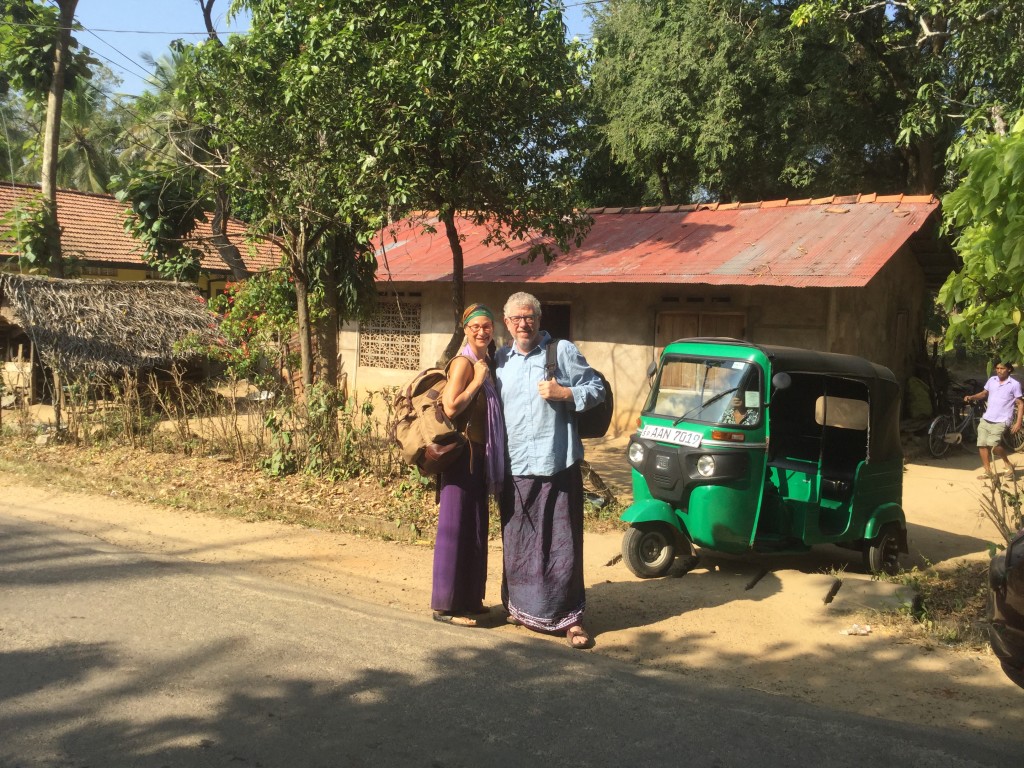
Outside of Jana’s house. He bids farewell to his family before the days journey further South. HIs mom contributes a package of freshly baked hoppers for our journey! Sweetness.
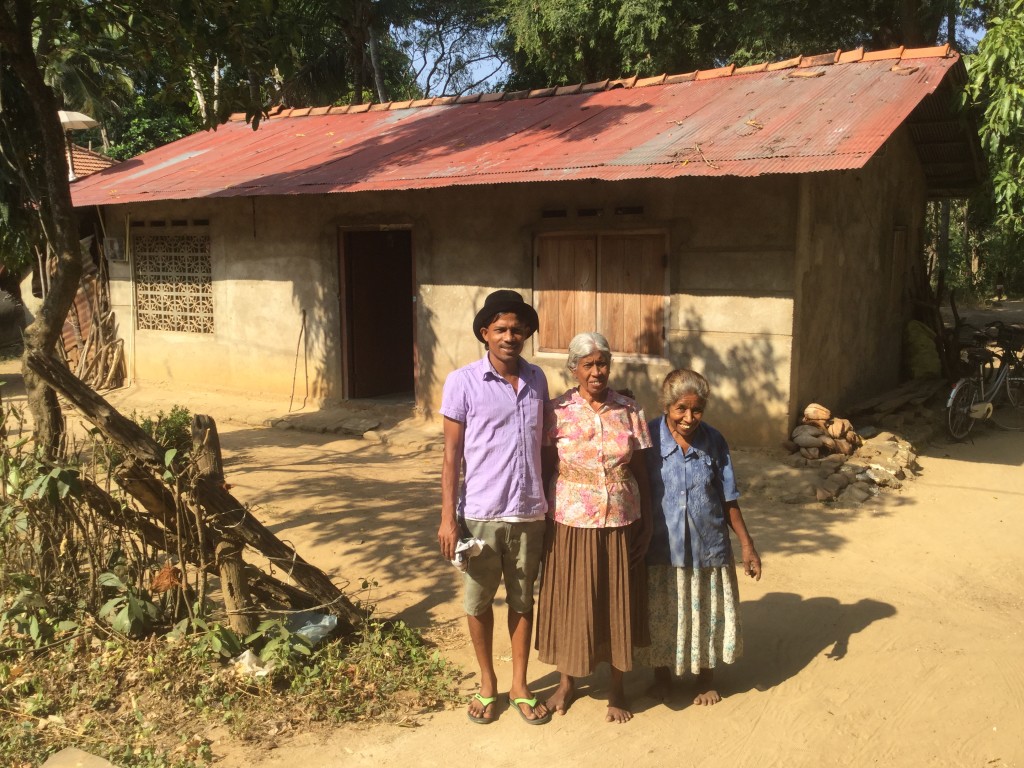
Jana, his mom and his aunt outside their home in Tissa Lake. Such a pleasure for us to be introduced to his family.

Freshly baked hoppers for the road from our tuk tuk driver, Jana’s mom. Remindful of myself giving any one of my boys food for the road in the past as they embark on a journey. Mothers are the same, the world over.
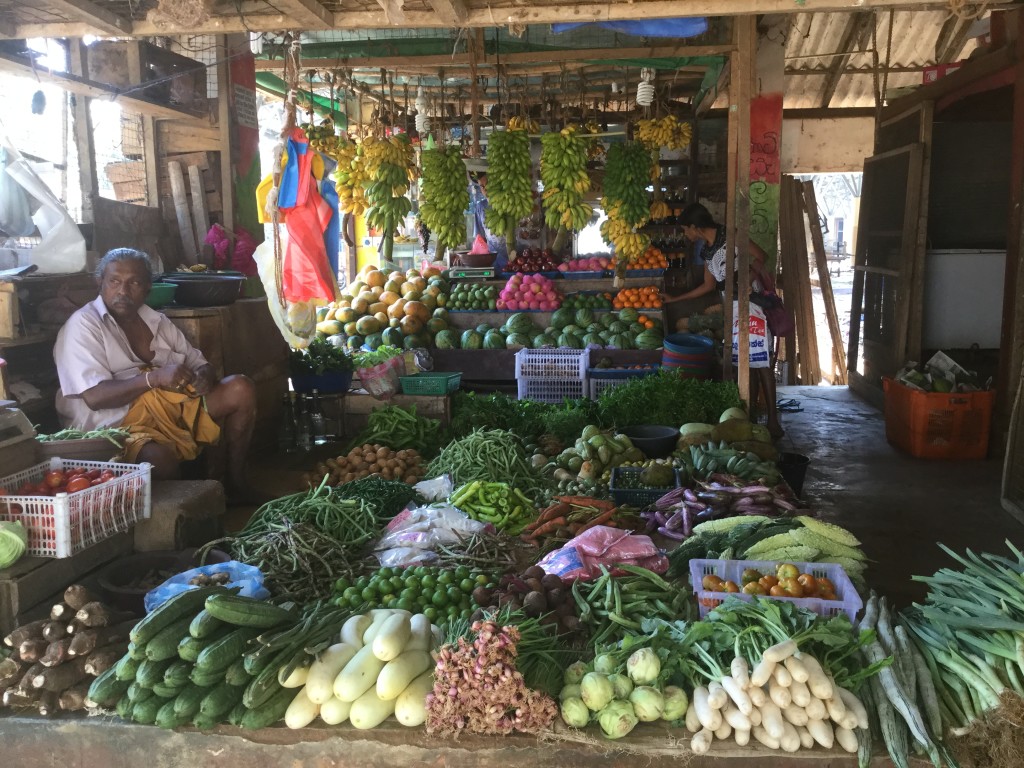 Stopping at a small store to buy fresh fruit for the journey.
Stopping at a small store to buy fresh fruit for the journey.
We so enjoy the beauty of the overall Tissa Lake region. Nature is easily accessible – languid lakes, bountiful birds, fantastic fruit bats, always popular water buffalo, playful monkeys and magnificent trees.
Ben and I are both passionate about spending time in nature, in wild places. Watching, observing animals. Being surrounded by the greens of trees and the blues of water, this for us, is bliss.
I have long felt that access to nature for me is way more than a desirable pleasant activity. It is a necessity and a core component to who I am. I feel depleted when living in an urban environment without frequent and repeated time immersed in nature. I have a very strong conviction that people can recharge their energy and healthy by connecting with nature.
For those interesting: there is academic and scientific research around a field called “nature connectedness” ie. the extent to which individuals include nature as part of their identity.” The documented benefits to between nature connectedness and health and well being are quite significant. (http://www.ncbi.nlm.nih.gov/pmc/articles/PMC4157607/)
If you enjoyed reading this post, please drop us a comment below
To receive Green Global Trek adventures fresh off the press, directly in your inbox,
please subscribe (easy to do, on the upper right hand side of this blog)
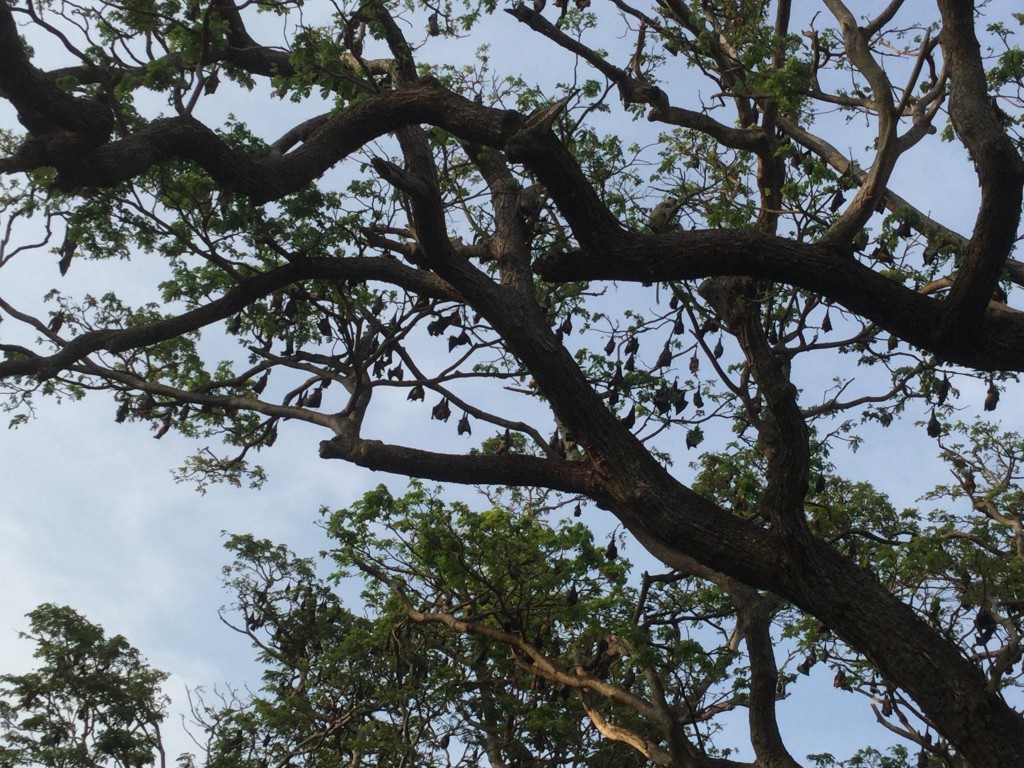
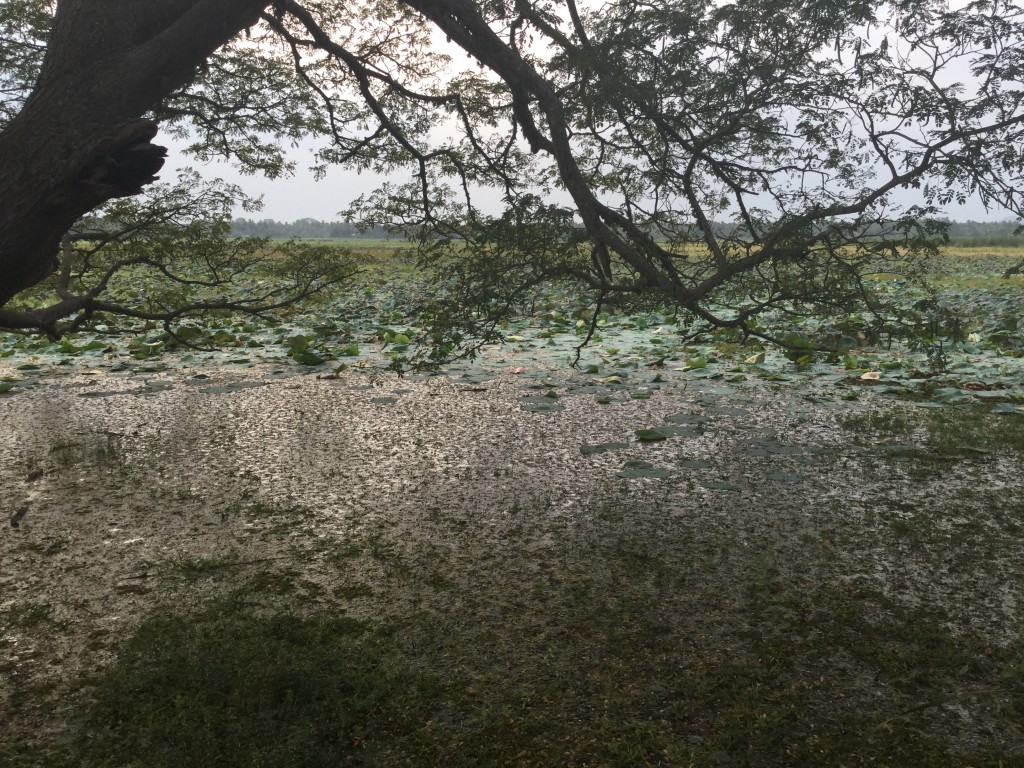
Great post! Maybe we’ll get to Sri Lanka one day. So much world so little time. I’m with you on the being in nature thing Peta. I crave it after a while away from it. We saw many fruit bats in Australia. There the correct name is flying fox. They look a bit like foxes. And they sure make a racket!
https://alisonanddon.com/2015/11/04/water-world-with-bats-pythons-and-crocodiles-top-end-meandering/
Alison
Alison, isn’t it interesting how nature – in all its diversity becomes a connective tissue between countries… providing rest, recharging and regenerating our nomadic physical bodies.
Thanks for the blog link on the Australian flying foxes.
Yes! Do put Sri Lanka at the top of your destinations short list.
Peta
It’s indeed challenging to think of bats as cute but the vid is very nice. I’m not sure I’ve ever considered bats sans caves. Thanks for the outsite!
Here’s the post we wrote a year ago when we were in East Bali and visited the Bat Temple cave, quite an incredible bat experience too!
http://www.greenglobaltrek.com/2014/02/a-luxurious-meander-in-east-bali.html
Peta
From Helen K:
Great pix, Peta! I love Sri Lanka, spent about a month there over 20 years ago, but couldn’t go much to the east as the war was going on. What a paradise. Enjoy,
Helen
p.s. is Unawatuna beach as pristine as it used to be? I know it was hit by the tsunami.
Wow twenty years ago! Amazing! It would be fascinating for you to return… Probably not THAT different.
We went to Unawatuna beach the last time we were in Sri Lanka, a year ago… It is still very beautiful even though yes Sri Lanka was hit hard by the tsunami! We heard chilling first hand accounts of the devastation and destruction from those that lived through it.
Peta
I couldn’t agree with you more about the link between nature and health. Getting into nature is an essential part of my life and seems to get more and more important as the years go by. I love the photo of Jana and his family, so sweet. And you guys cut a pretty fine fashion statement! Looking forward to reading about your baby elephant mission.
I love the photo of Jana and his family too. They were so excited to meet us and so sweet giving us freshly made food for the road! Such a pleasure.
I’m writing this now from Chicago where our base is an urban jungle…always dreaming of being immersed in nature! Luckily in the meantime there is a nearby park with lots of trees and green.
Why thank you for the fashion compliment.
Baby elephant visit and mission coming up soon!
Very interesting post. I love the photos of the trees. It must have been fascinating to see the bats. Did they smell? I saw bats once in Australia in a park and the smell as I approached them was unpleasant.
Thanks Donna.
No there was no unpleasant smell whatsoever … On the contrary, and we were quite close to the trees.
When we lived in Nicaragua where bats roosting under the eaves of houses was quite common, there was no smell either. Nor when we visited a bat cave temple in Eastern Bali Indonesia where the temple cave was literally full of hundreds and hundreds of bats. But quite a noise racket of communication between them!
I LOVE Ben’s sarong! Bah! Who needs pants? Useless things!
HAHAHA !!
Ben swears by their comfort over pants! He now has sarongs from Bali, longyis from Myanmar and lungis from India!
Very interesting post, Peta. You two seem to get the most out of a day of travel! Or a month. The first time I saw fruit bats up close, a young boy in Sumatra had about five of them hung on a stick, to sell. For someone (not me) to eat. I don’t eat anything with the word “bat” in its name. Or spider. Or cockroach.
I just read your comment aloud to Ben ( who is French and by nature an adventurous eater) and his comment was “Bat a l’orange? – sounds intriguing.” I say “Eeeeewwww! Not my favorite sight to see wildlife caught by humans for consumption.”
In Cambodia, Ben did eat a few bugs and was tempted to try the fried tarantula … but I stopped him!???
We had never seen fruit bats until our visit to Australia last month. another blogger who lived in the area pointed them out to us or I think we would have missed them. Loved that you included the video clips. So blissfully quiet and peaceful.
So glad you enjoyed the video clips. The region where the bats were was so beautiful and calming ~ quite the contrast to the capital city of Colombo!
What a fascinating life you appear to lead 🙂 Stunning natural beauty.
Well thank you Johanna. The region of Tissa Lake really was incredible. We were awed by all the natural beauty around us.